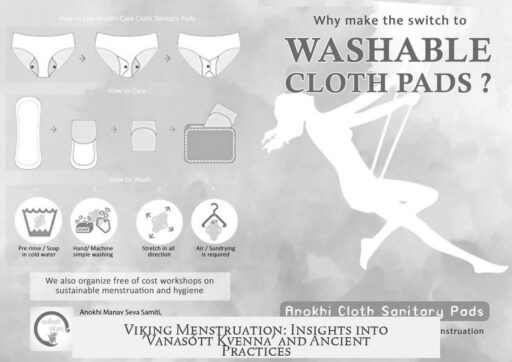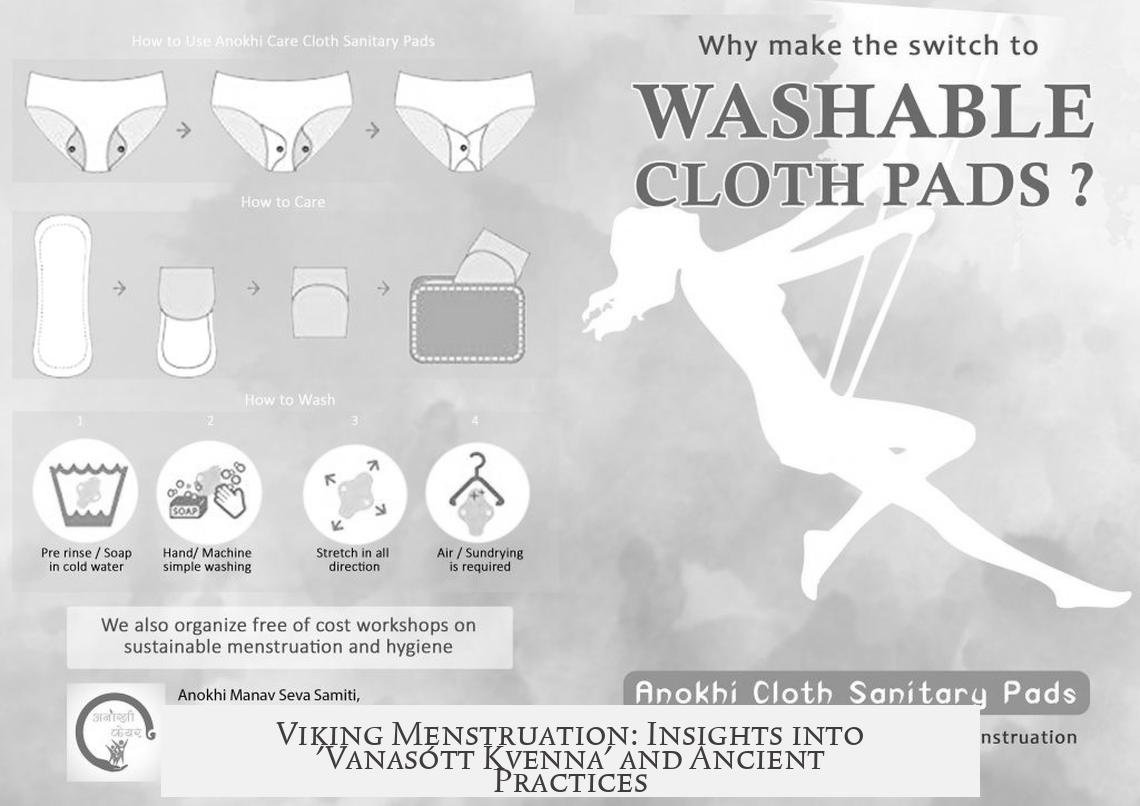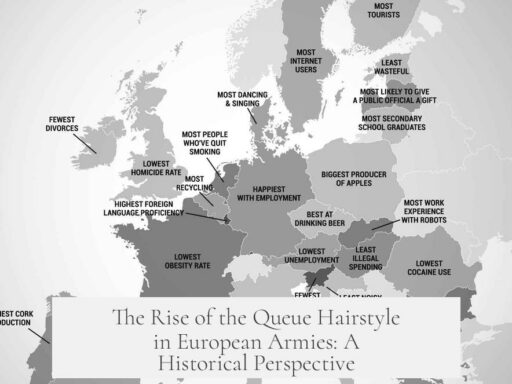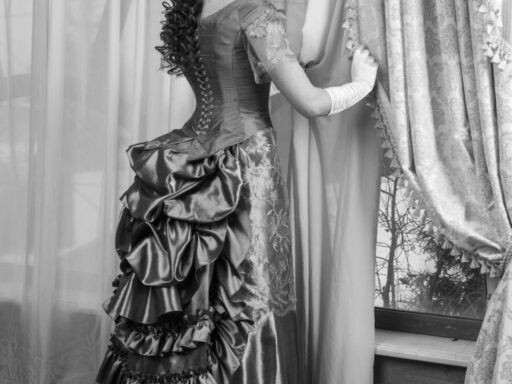Viking menstruation was acknowledged as a natural part of women’s lives, termed “vanasótt kvenna,” which roughly means “the women’s regular inconvenience or sickness.” This Norse terminology comes from religious texts translated into Old Norse, reflecting a neutral or practical view rather than a deeply stigmatized one.
The sources on Norse culture before Christianity largely come from men, shaped by male perspectives. These often omit detailed descriptions of menstruation. Vikings appeared not to emphasize menstrual taboos; bodily functions were relevant only insofar as they influenced social status or honor within their violent and honor-driven society.
The Old Norse word sótt linked to menstruation could suggest it was sometimes seen as an illness or a curse. This aligns with later Christian interpretations of menstruation as the “curse of Eve.” Yet, for the Norse, this concept likely had mixed layers—part medical, part magical. Women’s frequent pregnancies limited regular menstruation, affecting how it was experienced and described.
On a practical level, Viking women used bog moss for menstrual hygiene. Archaeological evidence from Norse cesspits across the Viking world confirms this. The moss came from the Sphagnum family, known for absorbent properties and natural antiseptic qualities.
This moss needed to be carefully harvested. Only fresh, live white or red moss from turf bogs untouched by soil was suitable. Women picked and cleaned it thoroughly before drying it in thin layers, creating an effective absorbent material. This tradition of using bog moss extended well beyond the Viking Age, lasting into the 20th century in Scandinavia for diapers and other hygiene needs.
- Viking menstruation referred to as vanasótt kvenna, a practical term without strong stigma.
- Sources are male-authored, limiting insights into female experiences.
- Menstruation could be seen as illness or curse, reflecting mixed beliefs.
- Bog moss from Sphagnum species served as natural menstrual absorbents.
- This method has archaeological support and persisted in Scandinavia for centuries.
Viking Menstruation: Unraveling the Mysteries of “Vanasótt Kvenna”
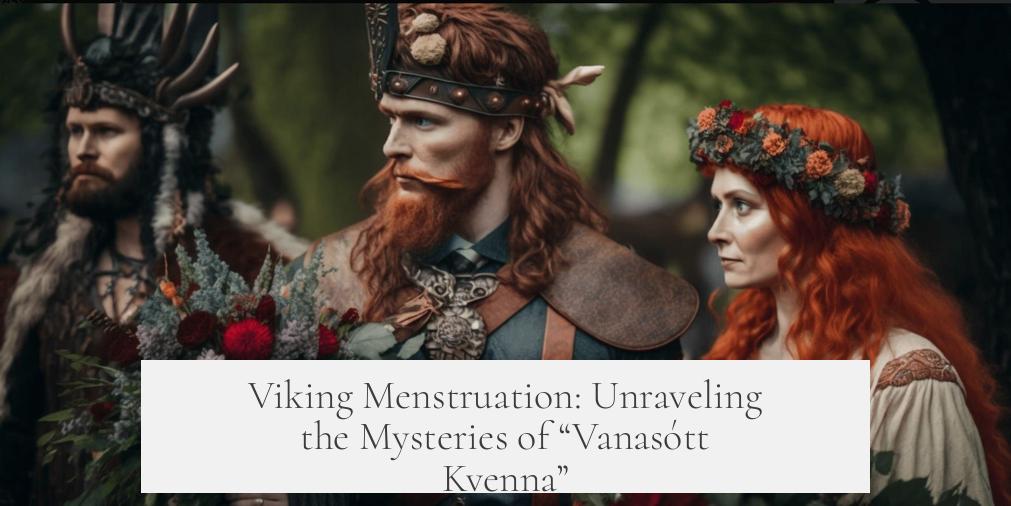
Viking menstruation? Yes, it’s a real thing that deserves more than just a sideways glance or an awkward nod in history books. Contrary to modern pop culture’s overflowing depictions of Vikings as solely battle-hardened brutes, their relationship with bodily functions, particularly menstruation, holds some fascinating insights.
Let’s decode this mystery through the lens of surviving Norse terminology, societal attitudes, and practical hygiene solutions, peeling back layers of myth and misunderstanding.
The Language of Blood: ‘Vanasótt Kvenna’
The Norse term for menstruation appears in Old Norse Bible translations as vanasótt kvenna. Translated roughly, it means “the women’s regular inconvenience” or “women’s sickness.”
Notice the tone? “Inconvenience” rather than a shunned taboo. It wasn’t a label of shame but something routine, acknowledged though not glorified.
Yet, these texts come predominantly from male authors, heavily shaped by Christian influence practically rewriting Norse worldview under new religious eyes. This influences how menstruation and other bodily functions were recorded and perceived.
Men’s View—But What Did the Women Think?
Almost all surviving records come from men writing for men before Latin literacy spread and Christianity took hold. We don’t have volumes from Viking women detailing their experience. So, what does that mean?
“The sources suggest Vikings neither overly glorified nor outright shunned menstruation but approached bodily functions pragmatically,” explains historian Freya Skålheim.
In Viking culture, eating, bodily fluids, sex — these weren’t mystified or stigmatized unless they impacted one’s social standing or honor. In a violent society obsessed with reputation, only status-changing factors gained emotional charge.
Hence, menstruation probably wasn’t a big deal unless it affected a woman’s ability to bear children or participate in family or community duties.
Was Menstruation an Illness or something Magical?
The word sótt in vanasótt can mean illness or ‘plague.’ Some suggest menstrual bleeding might have been perceived as a form of illness because many Norse women were pregnant most of their adult lives, so regular periods were less common.
Yet, there’s a twist: sótt also carries magical or religious connotations—think curses or divine punishment.
This dual meaning fits snugly with the Christian doctrine imported later, framing menstruation as the “curse of Eve.” But pre-Christian Vikings might have had a less judgmental stance, blending the natural with the spiritual without outright condemnation.
Practical Viking Hygiene: Bog Moss to the Rescue
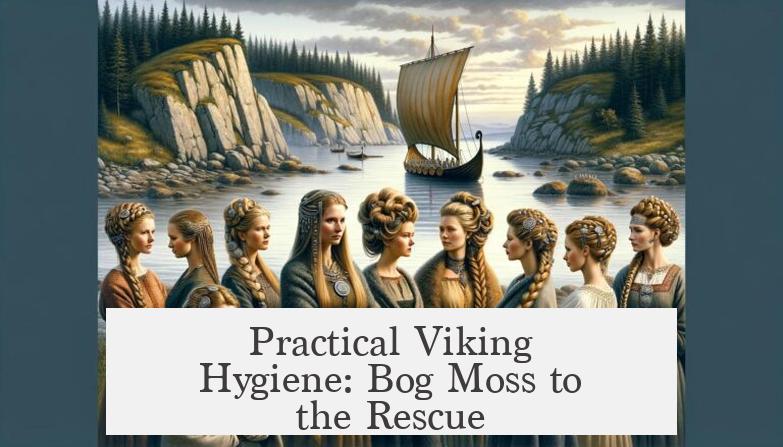
Now, the really interesting part: How did Viking women manage their periods? Archaeology and historical studies give us clues.
Turns out, bog moss—especially the live, fresh white or red moss from turf bogs belonging to the Sphagnum family—was their go-to absorbent material. This moss hasn’t been in contact with soil, ensuring it’s clean and effective.
Moss was ubiquitous for menstruation, diapers, and other hygiene needs well into the 20th century in Scandinavia.
| Material | Use in Viking Age | Characteristics |
|---|---|---|
| Bog Moss (Sphagnum) | Menstrual lining, diapers | Absorbent, antiseptic properties, easily dried |
Archaeologists find remnants of this moss in medieval cesspits and refuse heaps in Norse settlements. The practice required a bit of care—moss was picked thoroughly clean, laid out thinly to dry completely, and then used as a lining. Imagine it as a natural, biodegradable menstrual pad for Viking women.
So What Can We Learn from Viking Menstruation?
First, menstruation wasn’t shrouded in taboo or panic. It was a “regular inconvenience,” acknowledged with neither dramatic distaste nor excessive reverence.
Second, female experience is barely recorded but keeping hygiene practical was clearly important, shown by moss usage. The choice of materials shows Vikings valued cleanliness and comfort despite their “rough” image.
Lastly, the words and beliefs around menstruation were influenced heavily over time by incoming Christianity, likely warping earlier, simpler understandings.
Modern Takeaways: Would You Consider Bog Moss?
Curious fact: modern eco-friendly menstrual products sometimes echo ancient practices, highlighting natural absorbent materials. In a way, Viking innovations might inspire today’s zero-waste warriors.
So, whether you’re a history buff or just fascinated by bodily functions in unexpected eras, Viking menstruation reveals something vital — cultures often have practical, straightforward solutions when we look closer.
Next time you think about the Vikings, remember: beyond the axes and shields, there was everyday life, managing periods with ingenious moss. Who knew the Vikings could teach us a thing or two about natural hygiene?
